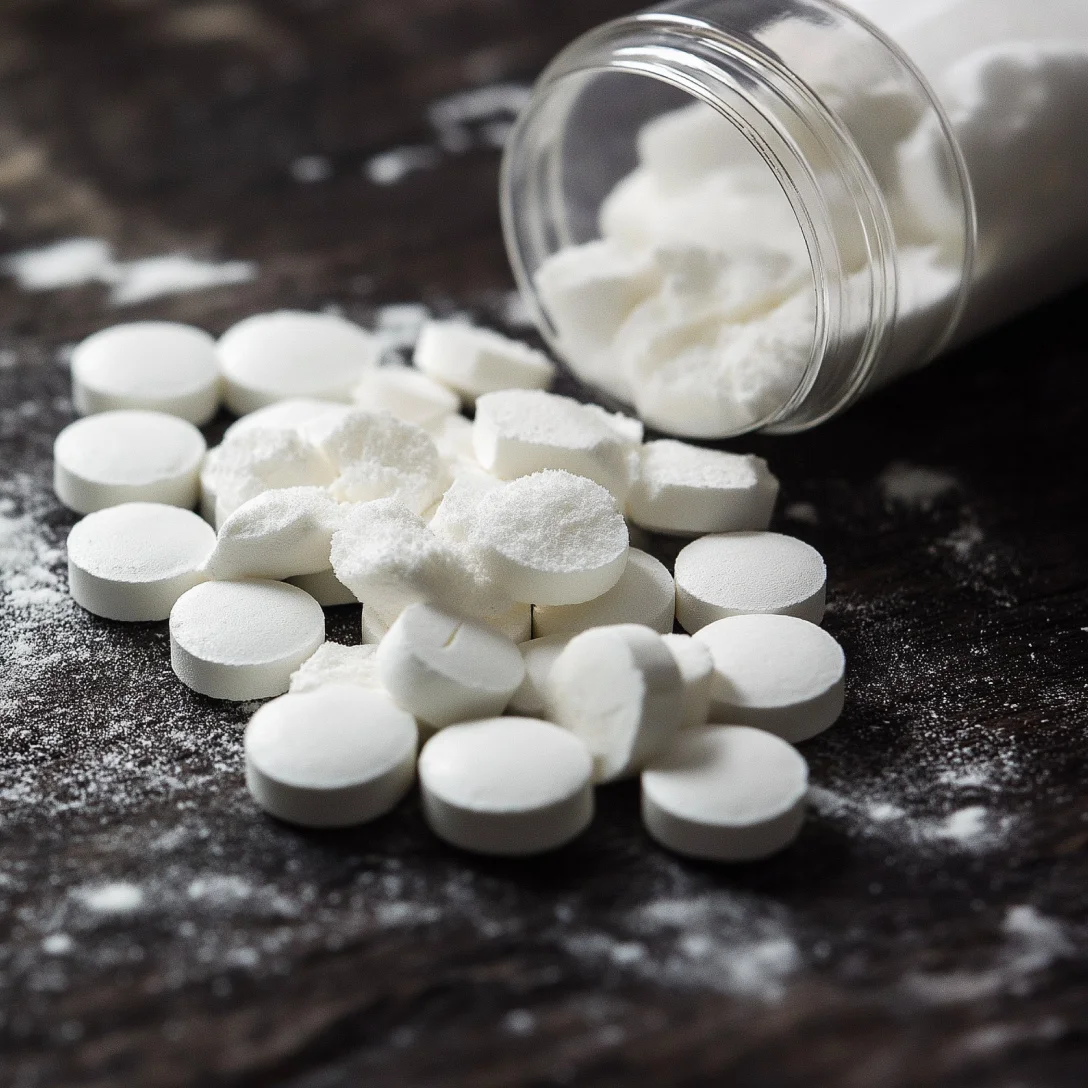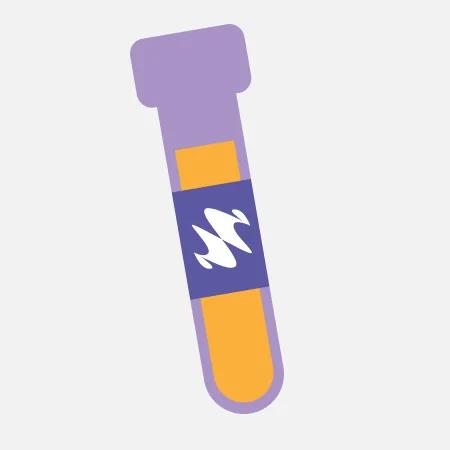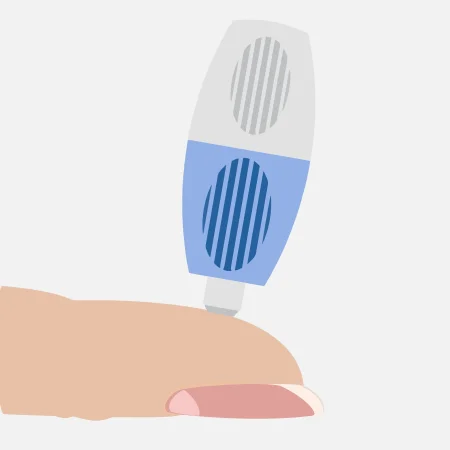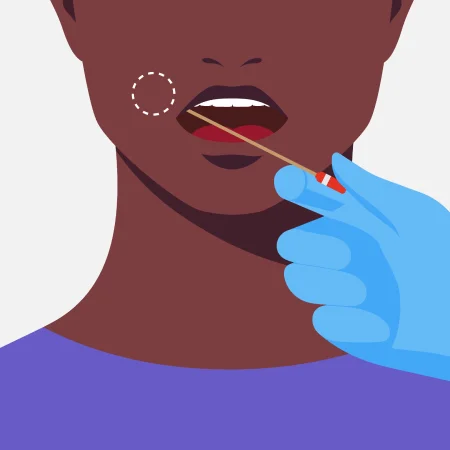- Drug and Alcohol
Court approved hair, nail, blood drug and alcohol testing - Maternity and Paternity
Ministry of Justice approved legal DNA testing - Wider Relationships
Understanding second and third degree familial connections - Immigration
Home Office approved testing for visas and passports - Expert Services
Court standard expert witness reporting - International DNA Collection
Home Office approved DNA collection from overseas
Introduction to Amphetamine
Amphetamine is listed in the category of Class B drugs under the UK Misuse of Drugs Act 1971. It's prohibited to possess, produce, or supply amphetamine.
Those who are found with amphetamine may face a maximum of up to 5 years in prison with an unlimited fine. Those found producing or distributing amphetamine could face a maximum sentence of 14 years and an unlimited fine.
According to Statista, 8.5% (2.9 million) of the UK's population between 16 and 59 claim to have tried using amphetamine at least once in their lives. It's somewhat fair to say that the rate of use of amphetamine is similar to that of cannabis, but cannabis use is more frequent.Still, such amphetamine usage rates create enough justification for accurate and reliable amphetamine drug test methods.
The misuse of amphetamine can also impact health, family, and employment.Below, we will look at amphetamine misuse and provide you with all the necessary information about an amphetamine test.
Amphetamine Street Names
Amphetamine has multiple common and well-known street names. Some of the most recognisable include:
- Speed
- Uppers
- Ice
- Bennies
- Dexies
- Pep pills
- Whizz
These names typically indicate misuse. Some weight loss medications have been reported to contain amphetamine and further reports of substances are sold on the black market that may contain amphetamine.
Amphetamine's Chemical Structure
Amphetamine are in the phenethylamine class with the chemical name C9H13N. They work by stimulating the central nervous system as they increase dopamine and norepinephrine levels.
The chemical structure means they then pass through the blood-brain barrier, improving cognition and energy levels. Users report feeling energised, focused, and a rush of euphoria. It can also induce anxiety and nervousness.
Amphetamine drug testing is essential in numerous settings. At AttoLife, we offer reliable and accurate testing solutions for legal and healthcare professionals as well as employers. Contact us today for more information.

How To Test For Amphetamine
Legal and healthcare professionals, as well as employers, have multiple testing methods available. Here are the most common:
01
Hair
Long Detection Window (Months)

Hair drug tests have the longest detection window. We think they're the most accurate and reliable drug tests for ongoing legal scenarios. Each centimetre of hair represents about one month of drug use, so it's easy to determine how long amphetamine misuse has been happening for and also segmental hair analysis helps to understand the pattern/behaviour of use over a period of time. Typically, the detection window is up to six months.
Explore Hair Drug Test02
Fingernail
Long Detection Window (Months)

Similar to the hair drug test, nail drug tests have a longer detection window. Professionals will be able to detect months worth of amphetamine misuse using a nail sample. Typically, the detection window is six months to twelve month.
Explore Fingernail Drug Test03
Urine
Medium Detection Window (Days)

Urine tests are incredibly accurate and an excellent testing method for legal and healthcare professionals as well as employers. Detection windows vary: Occasional users: 1 to 3 days Moderate users: 3 to 5 days Chronic users: Up to 7 days Urine tests detect metabolites rather than the active drug, meaning there's an opportunity to detect ongoing misuse. A urine test is commonly used alongside a blood test.
Explore Urine Drug Test04
Blood
Short Detection Window (Hours to Days)

Blood tests provide accurate results for recent use.amphetamine enter the bloodstream quickly and rapidly metabolise into the above-mentioned metabolites—norephedrine and 4-hydroxyamphetamine. Sadly, the detection window is only up to 48 hours for one-time users, and some reports claim up to 72 hours for regular users. An amphetamine blood test is best used at the time of suspected misuse, such as immediately after an arrest or at work if an employee seems incoherent. We'd also recommend it being used alongside another testing method, like a hair sample, if part of an ongoing court case where amphetamine misuse is detected.
Explore Blood Drug Test05
Saliva
Short Detection Window (Hours to Days)

Saliva/oral fluid tests are fast and non-invasive, but they're not the most effective. The detection window is only between 24 to 48 hours. It's ideal for detecting amphetamine misuse at the time of an offence, like a road traffic accident, or during workplace or healthcare screening. Despite the short detection window, saliva's rapid detection (the test reveals misuse in under 30 minutes) is advantageous in time-sensitive situations.It's more commonly used alongside a hair test for more accuracy.
Explore Saliva Drug TestLegitimate Use Cases for Amphetamine
Amphetamine use is predominantly illegal. In some cases, forms of amphetamine (or drugs with a similar chemical compound) are prescribed for specific medical conditions. Some of the most common are:
- ADHD (Adderall XR 10)
-
Narcolepsy (Adderall XR 10, Desoxyn)
These are valid and effective treatment options only available with a prescription.
Recreational misuse remains a significant issue.
Will Amphetamine Show Up on a Drug Test?
Yes, amphetamine are detectable on drug tests. Once a user consumes amphetamine, it metabolises into norephedrine and 4-hydroxyamphetamine. An amphetamine drug test is be tested by itself but also included in standard 5, 6, and 9-panel tests (including MOCCA and MOCCAB) to identify the drug and its metabolites.
Testing for amphetamine is standard in legal, professional, and healthcare settings thanks to it being part of the 5- and 9-panel drug tests - the two most commonly requested drug panels.
Get a QuoteHow Long Does Amphetamine Stay in Your System?
Detection windows vary. We've discussed the detection windows based on the testing method. How long it says in your system also depends on the following:
- Blood Test: 48-72 hours
- Urine Test: 1-7 days depending on frequency of use
- Saliva Test: 24-48 hours
- Hair Test: Several months. Depends on the length of the hair, but typically 3, 6 or 12 months.
- Nail Test: 6 and up to 12 months
Get a Quote
Factors Influencing Amphetamine Presence in Your Body
Several factors affect how long amphetamine stay detectable:
- Body composition
- Usage habits
- Consumption method
- Age
- Purity
Amphetamine Use in Legal Scenarios
Drug testing for amphetamine is requested as part of any legal case where misuse is suspected. Some of the common legal scenarios include:
- Family law: negligence, child custody and care proceedings
- Roadside traffic accidents
- Probation monitoring or any court-mandated case
- Workplace incidents: Misuse in safety-sensitive roles
False Positives and Interpretation of Amphetamine Results
Illicit amphetamine is composed of a mixing between the two enantiomers (S)- and (R)-amphetamine. On the other hand, when amphetamine is used in medical treatment, the more potent (S)-amphetamine enantiomer is used.
False positives can and do occur during the presumptive screening step and with isomers, but they're not exactly common. Some of the causes of false positives include:
- Cross-reactivity with medications like pseudoephedrine
- Mishandling of samples or outdated tests
Using multiple testing methods and checking for cross-reactivity medications, pseudoephedrine will improve the accuracy of amphetamine testing. Gas Chromatography-Mass Spectrometry, or GC-MS testing, can also confirm misuse.

Popular Culture and Amphetamine
Amphetamine has a complicated place in popular culture. Films like Limitless glamorise their performance-enhancing effects and ignore risks like addiction and legal consequences.
Amphetamine also appears in music and literature, often romanticising their effects.
Get a Quote
Notable Forensic Cases Involving Amphetamine
Amphetamine misuse is common in forensic cases involving violence, impaired driving, and even deaths. It's easy for forensic tests to determine whether amphetamine misuse was involved at the time of an offence.
Case Overview:
In 1998, a 21-year-old woman, Kasia Kulinowska, was killed in a hit-and-run incident while cycling in Adelaide. The driver, Eugene McGee, a well-known lawyer, was under the influence of amphetamine and alcohol at the time of the crash. Instead of stopping to assist the victim, McGee fled the scene and later attempted to cover up his involvement.
Forensic Evidence & Amphetamine Use:
Toxicology reports indicated that McGee had amphetamine and alcohol in his system, impairing his driving ability.
Investigators used forensic toxicology to determine the level of impairment and its role in the accident.
Eyewitness reports and forensic crash analysis helped reconstruct the sequence of events.
Risk of Contamination
As we said, street-sold amphetamine is never pure. The risk of contamination is guaranteed unless prescribed and distributed by medical professionals. The risk of contamination increases the risks of health issues, especially with synthetic additives. It can also compromise the accuracy of amphetamine drug tests.
Get a Quote
